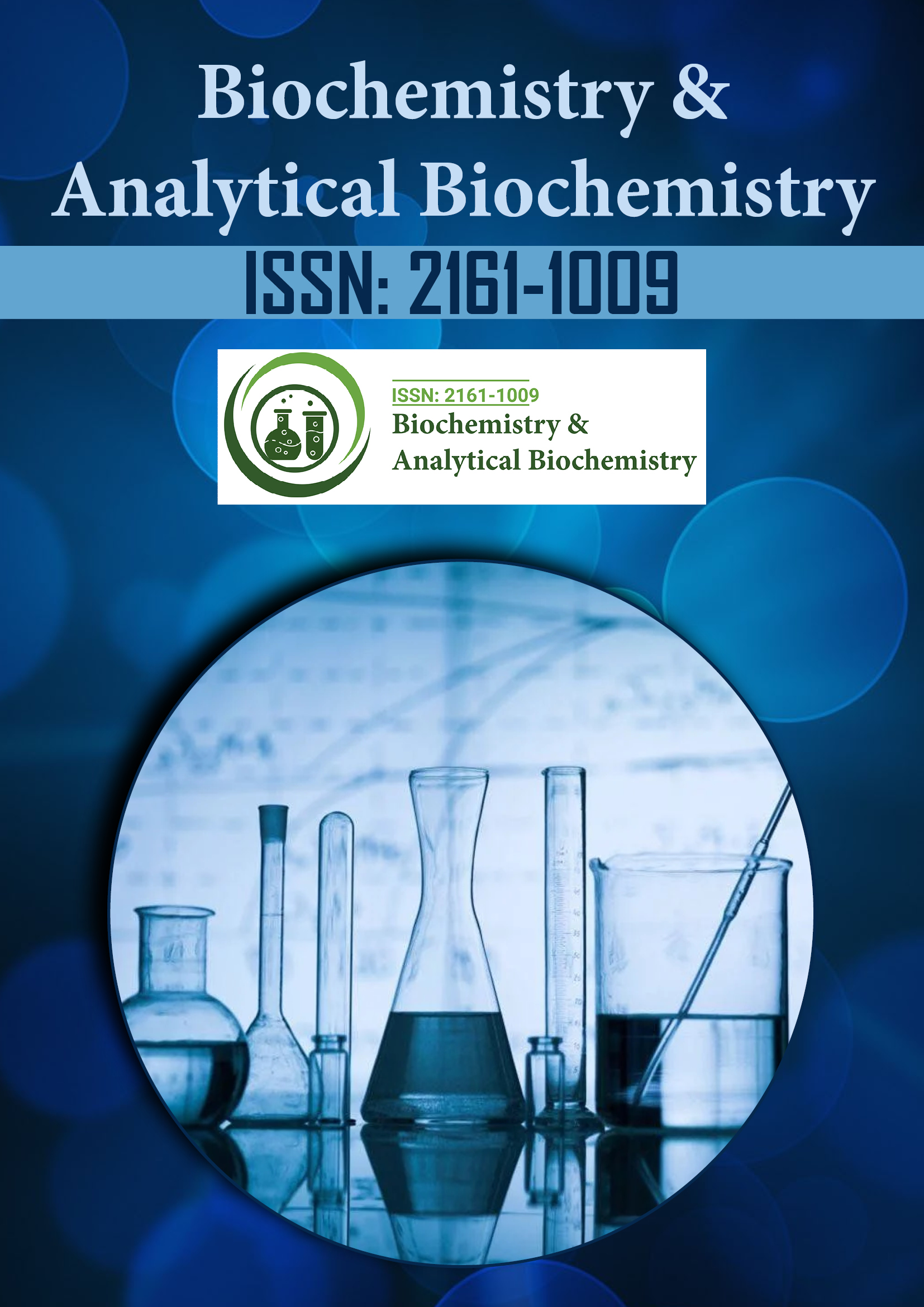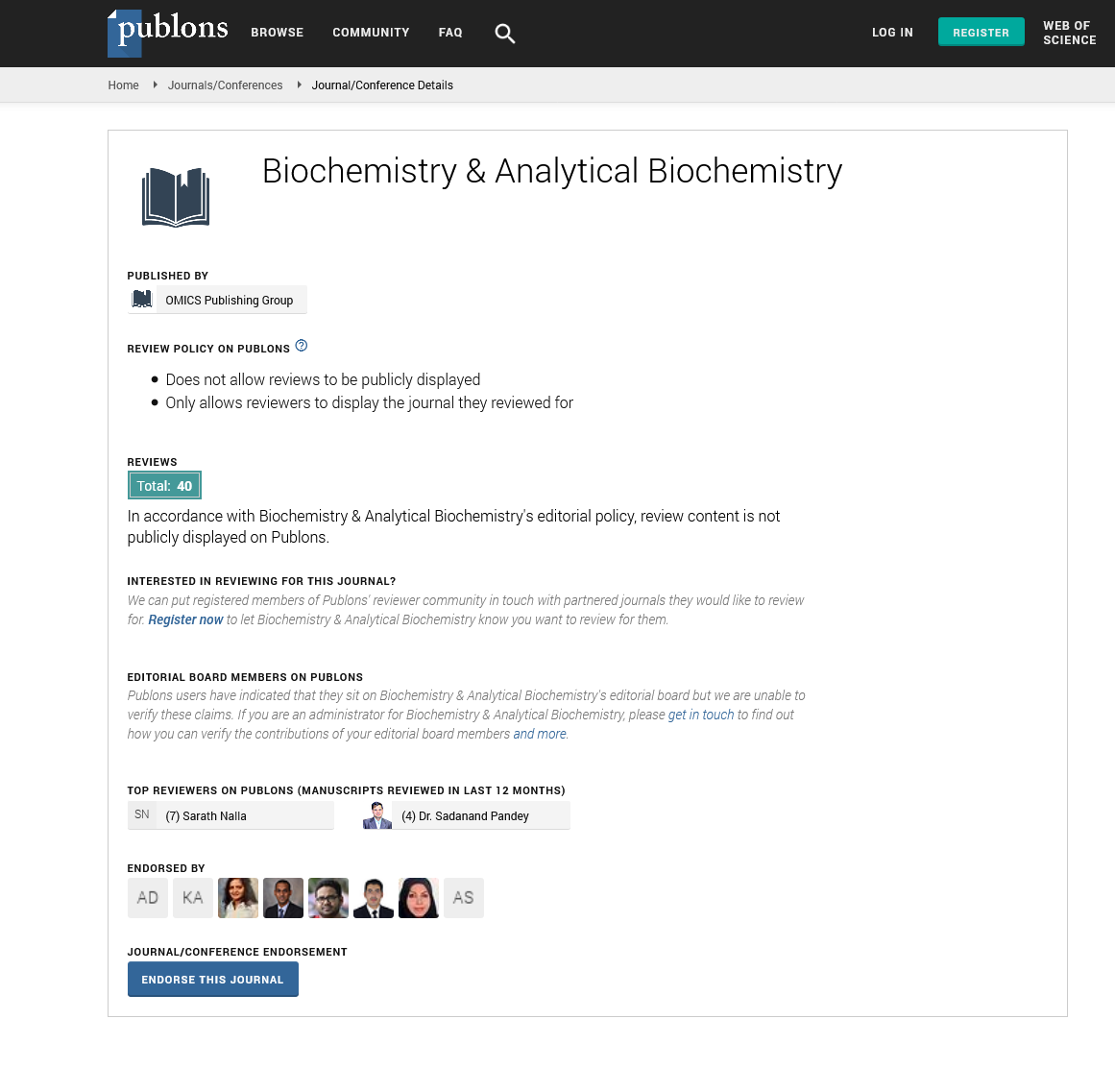Indexed In
- Open J Gate
- Genamics JournalSeek
- ResearchBible
- RefSeek
- Directory of Research Journal Indexing (DRJI)
- Hamdard University
- EBSCO A-Z
- OCLC- WorldCat
- Scholarsteer
- Publons
- MIAR
- Euro Pub
- Google Scholar
Useful Links
Share This Page
Journal Flyer

Open Access Journals
- Agri and Aquaculture
- Biochemistry
- Bioinformatics & Systems Biology
- Business & Management
- Chemistry
- Clinical Sciences
- Engineering
- Food & Nutrition
- General Science
- Genetics & Molecular Biology
- Immunology & Microbiology
- Medical Sciences
- Neuroscience & Psychology
- Nursing & Health Care
- Pharmaceutical Sciences
Perspective - (2025) Volume 14, Issue 1
Non-Canonical RNA Modifications as Regulatory Switches in Cell Fate
Mira Steinbach*Received: 03-Mar-2025, Manuscript No. BABCR-25-28842; Editor assigned: 05-Mar-2025, Pre QC No. BABCR-25-28842 (PQ); Reviewed: 19-Mar-2025, QC No. BABCR-25-28842; Revised: 26-Mar-2025, Manuscript No. BABCR-25-28842 (R); Published: 02-Apr-2025, DOI: 10.35248/2161-1009.25.14.575
Description
The central dogma of molecular biology — DNA makes RNA makes protein — has long served as the foundation for understanding gene expression. Yet this once-linear view has increasingly given way to a layered, dynamic picture in which RNA is not merely a passive messenger but an active regulatory molecule. Nowhere is this shift more profound than in the recent explosion of research on non-canonical RNA modifications, particularly N6-methyladenosine (m6A), pseudouridine (Ψ) and 5-methylcytidine (m5C). These modifications are reshaping our understanding of how gene expression is regulated post-transcriptionally, offering a nuanced control mechanism comparable in importance to transcription factors or epigenetic histone marks.
RNA modifications were historically associated with stable, structural RNAs where they influence folding and decoding. However, over the past decade, the discovery of chemical modifications on messenger RNA (mRNA) and non-coding RNAs has ushered in a new field: epitranscriptomics. This field explores how cells "write," "read," and "erase" chemical tags on RNA, altering RNA fate and function in real time.
Among these, m6A is the most studied and has been found to affect nearly every stage of RNA metabolism from splicing and export to translation and degradation. The "writers" (like METTL3/METTL14), "erasers" (such as FTO and ALKBH5) and "readers" (including YTH domain-containing proteins) create a reversible and dynamic code that allows cells to rapidly respond to environmental stimuli. In stem cells, for example, m6A modifications fine-tune differentiation by marking transcripts for degradation or stabilization depending on the developmental context. In neurons, these modifications control synaptic plasticity by modulating localized translation.
What makes RNA modifications so compelling is their temporal and spatial precision. Unlike DNA modifications, which are relatively static, RNA modifications can change within minutes, enabling rapid adaptation to stress, infection, or growth signals. This is particularly crucial in immune responses, where transient mRNA modifications can selectively enhance or repress translation of cytokines or viral sensors, creating a molecular “dial” rather than a binary switch.
Moreover, non-canonical RNA modifications intersect with disease biology in increasingly surprising ways. In cancer, dysregulation of m6A has been linked to aberrant cell proliferation, evasion of apoptosis and resistance to therapy. Overexpression of METTL3, for instance, has been associated with acute myeloid leukemia, while loss of m6A "erasers" correlates with glioblastoma aggressiveness. These enzymes represent promising drug targets, offering tissue-specific and reversible modulation of gene expression—something traditional transcription factor inhibitors often fail to achieve.
In the nervous system, emerging research implicates RNA modifications in neurodevelopmental disorders and memory formation. Pseudouridine, once considered inert, now appears to enhance mRNA stability and translation during learning and neuronal plasticity. Disruptions in pseudouridine synthases have been implicated in intellectual disability syndromes, highlighting the physiological importance of these subtle chemical changes.
Despite this growing interest, the field of epitranscriptomics remains in its infancy. Detecting modifications with single-nucleotide resolution in a transcriptome-wide context remains a significant technical hurdle. Many studies rely on indirect antibody-based approaches that lack precision and the field is in urgent need of next-generation sequencing technologies capable of directly reading modified bases without chemical conversion or enrichment. Additionally, many modifications are cell-type- or context-specific, requiring novel in vivo biosensors and imaging tools to track their real-time dynamics.
From a broader systems perspective, RNA modifications add another axis of regulation to cellular computation. We must now consider an additional layer in genetic circuitry — one that integrates environmental inputs and modulates gene expression output via chemical fine-tuning of RNA molecules. This perspective forces a reconsideration of long-held assumptions in genetics and molecular biology, potentially redefining how we model gene networks and cell differentiation.
Therapeutically, targeting RNA modifications offers a level of plasticity and specificity rarely achievable by targeting DNA or proteins. Small molecules that inhibit or activate specific writer or eraser enzymes could allow for transient reprogramming of Biochem cell fate, especially in diseases where permanent genomic alterations are undesirable or risky. The potential applications span regenerative medicine, oncology, immunotherapy and even viral infections, where the manipulation of host or viral RNA modifications could tilt the balance toward recovery.
Citation: Steinbach M (2025). Non-Canonical RNA Modifications as Regulatory Switches in Cell Fate. Biochem Anal Biochem. 14:575.
Copyright: © 2025 Steinbach M. This is an open access article distributed under the terms of the Creative Commons Attribution License, which permits unrestricted use, distribution, and reproduction in any medium, provided the original author and source are credited.

